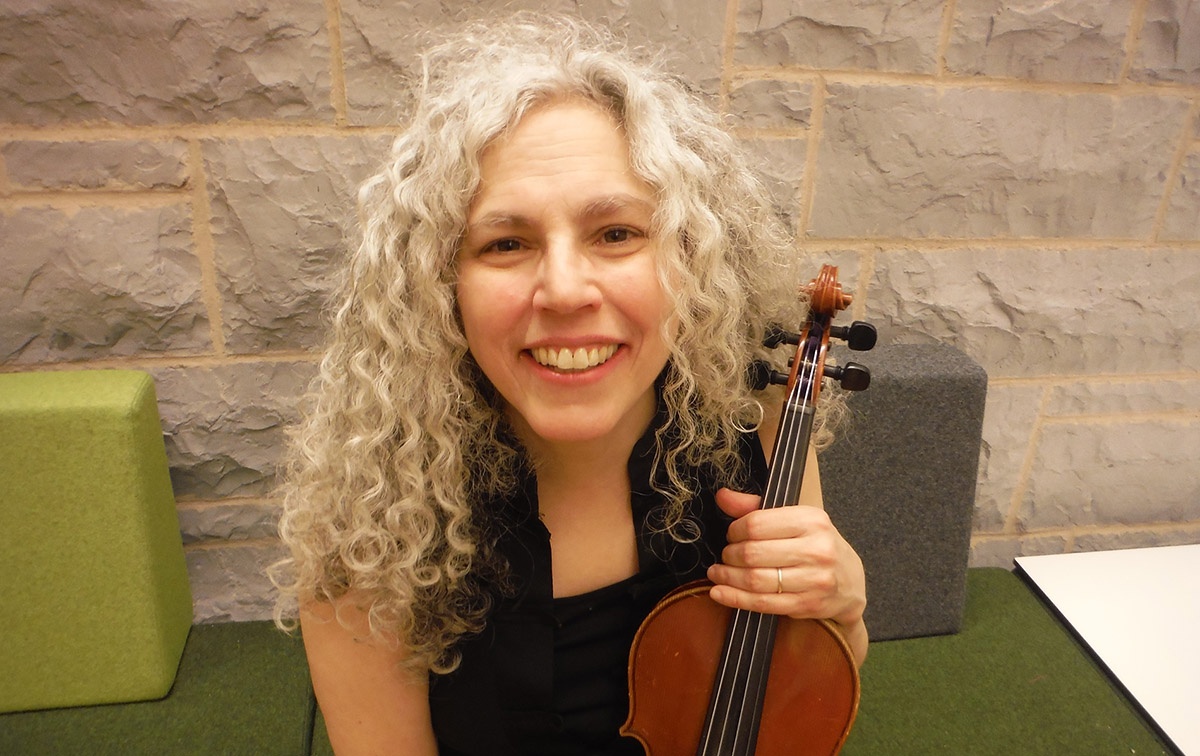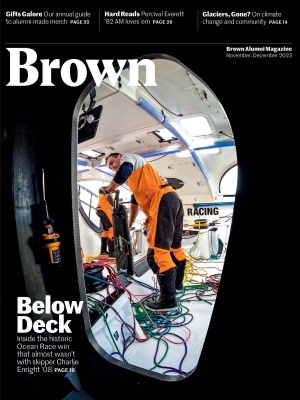When Alicia Svigals ’85 was 16, she met Andy Statman, the clarinetist who in the 1980s was instrumental (pun intended) in reviving the popularity of klezmer, the Ashkenazi Jewish music tradition that can be heard in “Hava Nagila” or parts of Fiddler on the Roof. “It’s an intensely emotional, melancholy music where agony and ecstasy meet,” says Svigals. Meeting Statman inspired Svigals, until that point a classical violinist, to take up klezmer playing. “It was virtuosic, like Bach, but also the music of my grandparents,” she says. After Brown, where she concentrated in ethnomusicology, she played in the streets of Manhattan before joining the Klezmatics: “I answered a Village Voice ad they placed looking for a violinist and ended up with them for the next 17 years.”
Svigals continued solo, writing music for Tony Kushner’s play A Dybbuk, playing in Berlin with the poet Allen Ginsberg, and even having her original klezmer compositions played by the renowned violinist Itzhak Perlman. In recent years she’s also worked with Donald Sosin, a pianist who composes new music for old silent films. She even wrote her own score for 1918’s The Yellow Ticket, about a Jewish girl who gets a job in a St. Petersburg brothel in order to get into medical school. (It’s complicated!)
“Early on, I just tried to copy what I heard other fiddlers doing,” Svigals says of her personal journey with klezmer, “but eventually I developed my own voice.” Like other traditional music, such as Irish or Greek, klezmer involves learning “a repertoire of musical ornaments,” or motifs, “that are never notated on paper but reflect how sung consonants sound, such as the breaks in the voice of a cantor”—the singer in a synagogue.
Currently Svigals, who performed at Brown in September, is in the studio working on her first klezmer album in years. “I hope it’s out by Hanukkah,” she says. “When I play klezmer, I can hear my own grandmother’s Yiddish speech patterns.” Listen and learn more at aliciasvigals.com.





